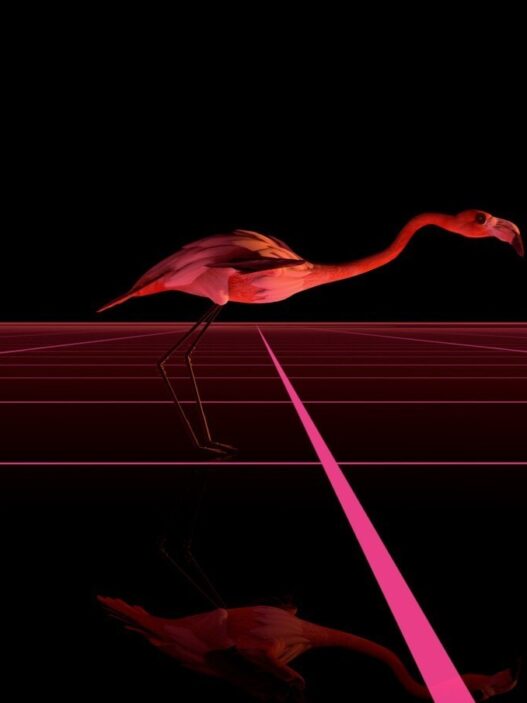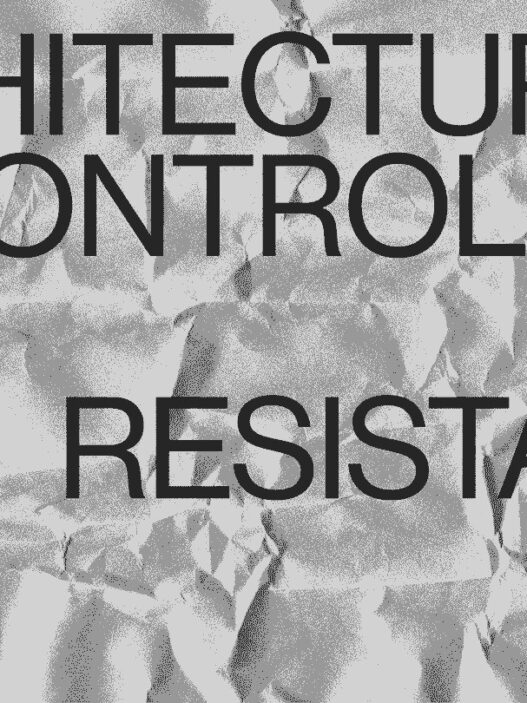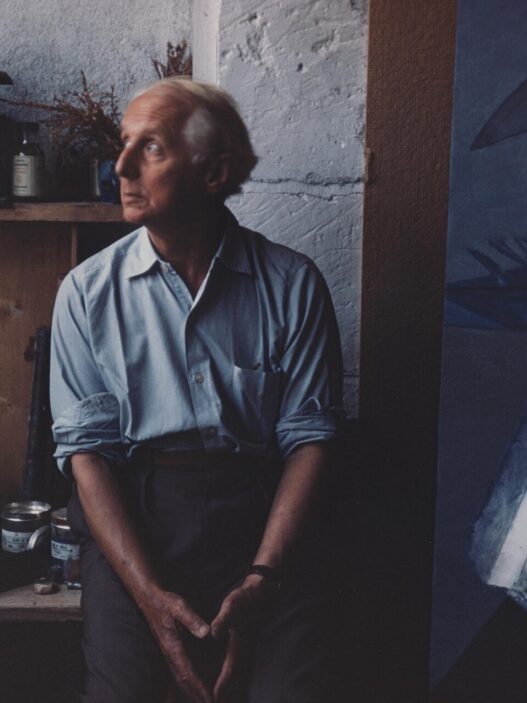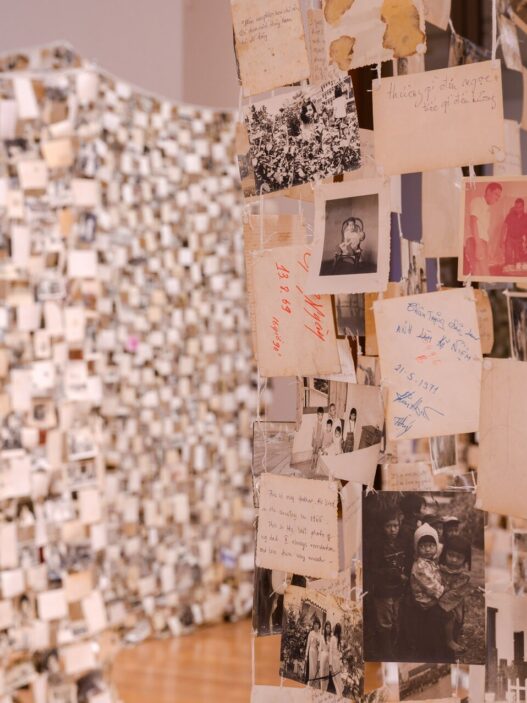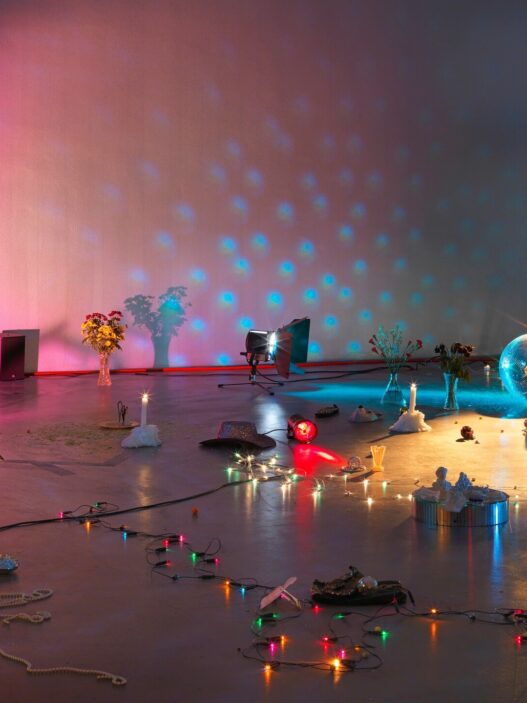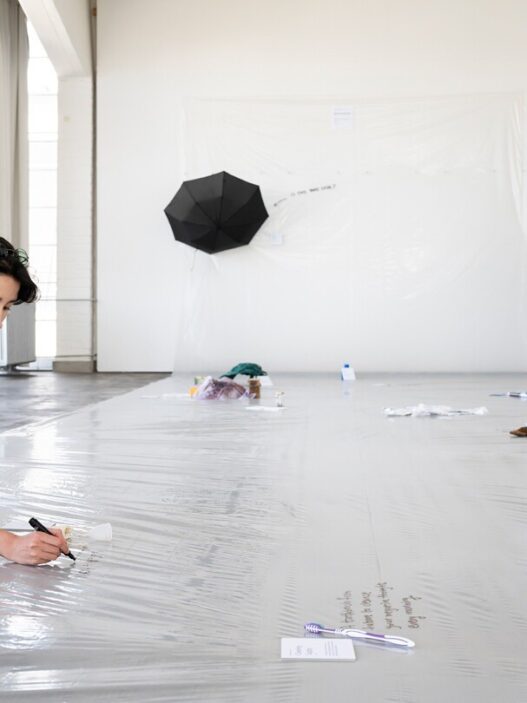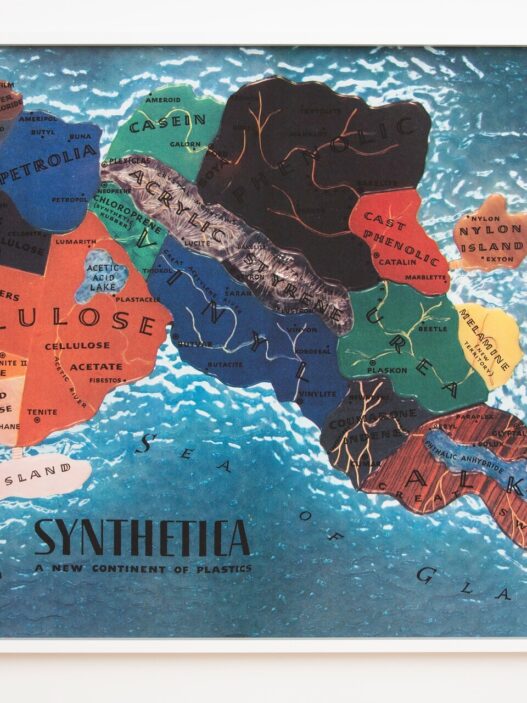Sixth edition of Dhaka Art Summit: Bonna will take place between between February 3 to 11, 2023 at Bangladesh Shilpakala Academy.
Dhaka Art Summit 2023 is told via the voice of Bonna, a persona who speaks to the globe from Bangladesh. She is a daring young lady who bravely asserts her dynamic individuality, refusing to be stifled by her brothers, uncles, or forefathers.
Bonna is a popular name in Bangladesh that also means “flood.” In Bangladesh, a flood does not just have the notion of “disaster.” Rather, Bonna’s DAS notion questions binary oppositions: necessity and excess, regeneration and disaster, adult and child, male and female. Bonna is invoked and interpreted in DAS 2023 as a complex symbol-system that is indigenous, personal, and global at the same time, an embodied non-human reversal of how storms, cyclones, tsunamis, stars, and all environmental disasters and “discoveries” are named. The 6th edition of DAS, conceptualized and produced by Samdani Art Foundation, investigates the politics of education and the myriad processes of colonization the mind, including the act of naming.
Bonna is an energizing creative force who invites us to join her in sharing tales and asking questions. She wonders why weather phrases are gendered, what the relationship between gender, the built environment, and climate change might be…why her name has been used as a weapon against indigenous peoples for ages across continents. For millennia, humans have used their minds and bodies to conjure rain from the sky through prayers, rituals, songs, and dances, and the various time-based live interventions at DAS are inspired by this energy that connects the soil, the human spirit, and the blue expanse above. Bonna is discovering that, unlike in the stories of the past, humans with power today are not only filling the soil with genetically modified seeds, but are also sowing the sky with clouds. She wonders if her name now has a different meaning.
Many things, like as rain, cannot be felt through a page or a screen, therefore DAS was created to be received as a physical experience of unity. DAS 2023 is filled with freshly commissioned time-based and participatory works that celebrate the force of orality and the energy that may be generated through live performance (art, music, theater, dance), with participants from Bangladesh to Brazil, Guadeloupe to Guam. The opening panel of DAS will bring Bonna together in conversation with her sisters in conversation—Natasha, EVA, and Melly—to consider the shift in how they see themselves as institutions and exhibition platforms, learning and unlearning how to be relevant in a world that has shifted seismically since the closure of DAS 2020, particularly in the aftermath of climate disasters pummeling the planet. A vibrant four-day opening weekend program, featuring city tours of 20th-century architectural wonders and a varied array of the city’s expanding number of art spaces, is available here.
Climate change is not one-way. It is a long-term systemic and episodic modification of ecologies, systems, and structures. “In the struggle against climate change, which is the war for our survival, we will not win by statistics, but we might win through tales,” writes Julian Aguon, an indigenous CHamoru climate fighter. DAS 2023 shows the work of organizations from across the country that apply creative thought to humanitarian and environmental concerns, realizing the ability for more meaningful, just, and beautiful forms of life in conditions that some may mistakenly view as “hopeless.”
How can you present a story about numerous catastrophes while fostering hope? Lesley Lokko, a Ghanaian-Scottish designer, thinker, and educator, observes astutely, “When you are in the eye of the storm, this is typically the best point to push for maximal change.” Extreme weather and a lack of governmental management pushed Bangladeshis to declare independence in 1971 and battle for the ability to express themselves and their stories in their native language. A Duality, curated by Bishwajit Goswami, takes an experiential look at how 36 Bangladeshi artists have been working with and presenting climate change from a contextual viewpoint, combining words and weather, in collaboration with scholar Muhammad Nafisur Rahman. The Samdani Art Award, curated by Anne Barlow, features new works by 12 emerging Bangladeshi artists who reflect on social, economic, and ecological challenges in the midst of one of South Asia’s most difficult climatic times.
When weather is imagined, it is based on the interaction of many forces that can perform both beneficial and destructive functions. To Enter the Sky, curated by Sean Anderson, brings together examples of buildings of resilience and trust, while also acknowledging fear, entropy, and annihilation. Architecture, beyond the structure, can activate new ways of engaging materiality, collaboration, community, sovereignty, and citizenship, much as instability compels us to negotiate the unknown. The exhibition focuses on Bangladesh as part of a larger reckoning of what it means to be human in and of the built environment today, asserting how architecture, as a spatial medium with materialities of hope and chance, can begin to disseminate radical stories of becoming to help us understand our own unique capacities as individuals, communities, and nations.
As we grow older, our perspective of the world shifts (up). Bonna may be young, yet nothing is older than a child. A youngster observes things for the first time. A child is a whole being with joy, sickness, intuition, memory, and numerous other things passed down genetically and culturally. Very Small Feelings, a Bonna chapter co-curated by Akansha Rastogi and Diana Campbell with Ruxmini Reckvana Q Choudhury, lovingly holds and hosts the figure of the kid as a stage. Childhood as a place where one can enter and exit at will; play in formative years when the self begins and transforms. Very Small Feelings is referred to as a “spread” by DAS and its institutional partner the Kiran Nadar Museum of Art because it is full of stories, rituals, fables, characters, memories, actions that produce many kinds of surfaces, children’s books, illustrations, folklore, popular cartoons, and a space for intergenerational conversations and entanglements that will reveal themselves in Dhaka in February and New Delhi at KNMA in July to September 2023.
In this spread, artists appear as provocateurs, mediators, instructors, prisms, and producers developing various strategies in their respective milieus. Very Small Feelings boldly positions artist educators at this fulcrum, highlighting numerous pedagogical experiments and creative collaborations between contemporary artists and young learners, as well as historically situating ‘other’ practices of select South Asian modernists as illustrators and initiators of platforms for learning and arts mediation. Characters that are real in the way they are known in many people’s imaginations join Bonna, eliciting feelings large and small through their relationships with other bodies, siblings, family, community, and the world around them, as well as our own bodies as participants inside the exhibition. Tripling as a playground, generative space for learning and exchange, and an exhibition, Very Small Feelings seeks to encounter the ‘inner child’ and bind us strongly to it.
Bangladesh Shilpakala Academy
14, 3 Segun Bagicha Road
Dhaka – 1000
Bangladesh













